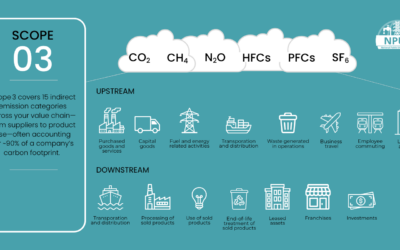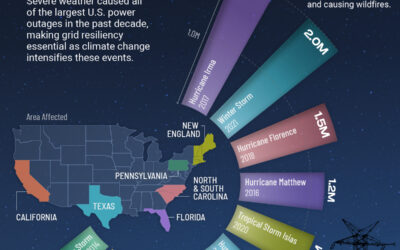Industry Report: Carbon Pricing, Part 1
The Essential Guide to Carbon Pricing: Navigating Challenges and Seizing Opportunities
Introduction
In the effort to combat climate change, carbon pricing emerges as a pivotal strategy aimed at curbing greenhouse gas (GHG) emissions. By attributing a monetary value to the release of carbon dioxide and other GHGs, this approach incentivizes a shift towards more sustainable practices. However, the implementation of carbon pricing is fraught with challenges, from regulatory hurdles to technological barriers. Despite these obstacles, the potential rewards — innovation, environmental preservation, and economic transformation — are immense. In this exploration, we delve into the basics of carbon pricing, examine its significance, and address the complexities of its adoption.
What Is Carbon Pricing and Why Is It Important?
The Basics
Carbon pricing is the process of assigning a direct monetary value to carbon emissions, essentially making polluters pay for the environmental cost of their actions. This methodology encompasses both the direct and indirect effects of GHGs based on their Global Warming Potential (GWP), thereby creating a comprehensive framework for comparing and pricing emissions. The primary strategies under the carbon pricing umbrella include carbon taxation and emissions trading systems (ETS), often referred to as cap-and-trade.
The Rationale
The rationale behind carbon pricing is straightforward yet profound. By attaching a tangible cost to carbon emissions, it incentivizes companies and individuals to reduce their carbon footprint. This market-based mechanism contrasts sharply with more traditional approaches, such as command-and-control regulations or subsidies, offering a more efficient way to drive environmental policy, stimulate technological innovation, and encourage sustainable practices.
Strategies Under the Carbon Pricing Umbrella
- Carbon Taxation: Governments charge firms for each unit of carbon emitted, encouraging the adoption of greener practices by making pollution financially disadvantageous.
- Emissions Trading (Cap-and-Trade): Establishes a market for carbon emissions, allowing firms to buy and sell emission permits, thereby incentivizing reductions where they are most cost-effective.
- Carbon Fee-and-Dividend: Taxes are levied on emissions and the revenue is redistributed, aiming to mitigate the economic impact on consumers while encouraging emission reductions.
Implementing Carbon Pricing: Challenges and Opportunities
Despite the growing acknowledgment of its importance, the implementation of carbon pricing faces significant barriers. Regulatory uncertainty, economic burdens, technological limitations, and political resistance all contribute to a challenging environment for the adoption of carbon pricing mechanisms.
Implementation challenges represent one of the main obstacles to widespread adoption. These challenges range from the political and social acceptance of new taxes or trading systems, to the logistical complexities of monitoring, reporting, and verifying emissions. Establishing a carbon pricing system requires robust legal and regulatory frameworks that can adapt to evolving economic and environmental realities. Moreover, the need for international cooperation adds another layer of complexity, as carbon pricing’s effectiveness is often contingent on its global reach to prevent carbon leakage — where companies relocate production to countries with laxer carbon policies. These implementation challenges must be navigated carefully to build the political will, public support, and international consensus necessary for carbon pricing to become a universally adopted tool in the fight against climate change.
Regulatory Uncertainty
Another primary barrier to the adoption of carbon pricing is regulatory uncertainty. This makes it difficult for businesses to commit to long-term investments in carbon reduction technologies, as future changes to policies or pricing mechanisms could render such investments less viable.
Economic and Technological Barriers
Economic challenges also play a significant role, as the initial costs of transitioning to low-carbon technologies can be prohibitive. Additionally, the integration of renewable energy sources and carbon capture technologies into existing systems poses substantial technological hurdles.
Opportunities for Innovation and Growth
However, these challenges are matched by significant opportunities. Carbon pricing not only drives reductions in GHG emissions but also stimulates innovation in clean technologies. Furthermore, it generates government revenue that can be reinvested in environmental initiatives, supporting a just transition to a low-carbon economy.
Conclusion: Moving Forward with Carbon Pricing
If successfully implemented, carbon pricing can serve as a cornerstone of global climate policy, driving economic and environmental benefits alike. However, achieving these outcomes requires overcoming significant challenges through innovative policy design, technological advancement, and international cooperation.
In the end, carbon pricing is not just a financial mechanism but a critical tool for ensuring a sustainable and prosperous future. As the world grapples with the urgent threat of climate change, the lessons learned from carbon pricing initiatives around the globe provide a roadmap for effective action.
Learn more about how electric utilities and the power sector can lead on the path toward decarbonization here.




